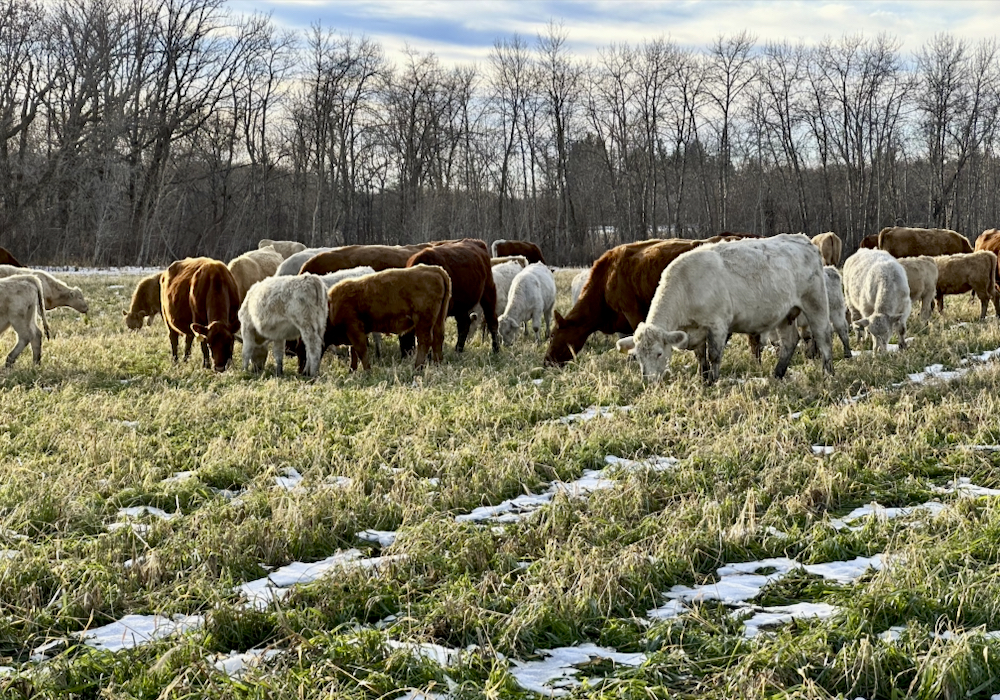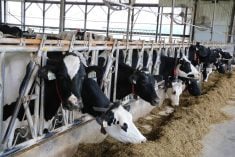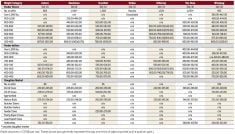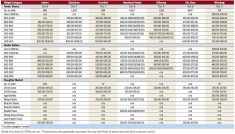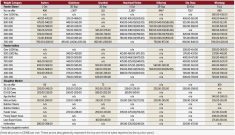The strain of bird flu infecting U.S. dairy herds could become a problem for the beef sector, but it may not have the same effects as it did in the dairy barn, according to New Mexico’s state veterinarian.
Why it matters: Migratory birds potentially carrying HPAI are on their way back to Canada.
The main economic impact of highly pathogenic avian influenza (HPAI) in dairy cattle has been reduced milk production, Dr. Samantha Uhrig noted. Most infected cattle have recovered.
Read Also

Seeding Indigenous agricultural prosperity
National Circle for Indigenous Agriculture and Food says Indigenous agricultural success needs strong relationships.
“There’s been very few mortalities reported and they’re often associated with a secondary issue,” she said.
For the beef producer either in or just weeks past the calving season, reduced milk production becomes a matter of if there’s still enough to feed the calf.
There is investigation into where the virus is taking root in the body of infected animals, Uhrig noted but, so far, the virus seems to have a preference for mammary tissue. The few necropsies that have been done have shown little virus in other tissues.
Also, at least in New Mexico, only a small cross section of the infected dairy herds is actually getting sick. The average hovers around 10 per cent of animals in a herd.
“That really is a relatively small number in the grand scheme of things,” she said. “If there are subtle symptoms being overlooked, it’s hard to know at this point.”
Market impact is the bigger concern for the beef sector. Producers initially feared that mass dairy cullings could throw the beef market for a loop. That turned out to be unfounded as infected dairy cattle recovered, Uhrig noted. “We’ve already seen a drop in the number of cows culled from those infected dairies, so I don’t anticipate the market is going to be flooded with cull cows the way we were first concerned.”
The futures market, however, did take a hit. Speculation on the impact of dairy HPAI cases helped drop cattle futures on the Chicago Mercantile Exchange to their lowest in two months April 3.
“Although there has not been evidence that the virus can be passed through human food, some investors have been selling futures on fears that beef demand would decline,” Reuters reported at the time.
Experts cited in the article also noted other factors, unrelated to bird flu, contributing to the slide.
Infection status
As of April 5, the United States Department of Agriculture had confirmed the strain (labelled H5N1 clade 2.3.4.4B) in 15 dairy herds across five states: seven in Texas, two in Kansas, three in New Mexico and one each in Ohio, Idaho and Michigan. The virus was first confirmed in milk samples from Texas and Kansas in late March.
One human case, found in Texas in a person in contact with dairy cattle, had also been reported. The only symptom of that case was eye inflammation, officials later said.
On April 2, Texas Agriculture Commissioner Sid Miller suggested that the outbreak may have actually started weeks earlier, when a mystery ailment blew through about 40 per cent of the state’s dairy operations.
As of the time of printing, there had been no reported cases in beef cattle.
The lack of beef cases has been a mystery for veterinarians in affected regions. “Everyone is scratching their head,” Michael Kleinhenz, a veterinarian and associate professor of dairy cattle health at Texas A&M University was quoted as saying in an early April article from Reuters.
“Here in the Texas panhandle, we have dairies next to feedlots, and cows in close proximity on range, and we’re only seeing it on dairies.”
Scarlett Madinger, vice-president of communications with the Kansas Livestock Association also noted the lack of beef cases. However, it’s “something that will remain on their radar,” she said.
“As of right now, there’s no specific steps being taken … but I think recommendations from the Kansas Department of Animal Health and upwards to the USDA would be similar to what they are for the dairies as far as making sure you’re protecting your water and feed resources from birds and wildlife as best as possible.
“I think that would apply to any livestock facility at this point, whether you’re beef or dairy. I think they would would implement any of those practices where possible.”
U.S. precautions
The New Mexico Department of Agriculture has released a list of recommendations to beef producers to keep the virus out. Those include monitoring bird activity, avoiding water sources heavily used by wild birds (a well-known vector of HPAI) and keeping water troughs as clean as possible.
Uhrig has also asked producers to separate out high-risk cattle from low-risk animals. Thus far, the virus has targeted older lactating cows.
Biosecurity efforts are also being recommended for feedlots. “Limit traffic on and off of the farm; keep speed bumps and water pumps clean on a regular basis and try to deter birds from congregating where feed and water sources are available,” Uhrig said.
There has been concerted effort from stakeholders to disseminate information to farmers, and both beef and dairy producers are more aware of the situation as a result, she added.
“We’ve been having calls almost daily to discuss this.”
One suggested cow-to-cow transmission in Idaho has been flagged, and the human case has also raised concern over how the virus can spread, but Uhrig believes there’s a strong possibility these were not direct, but a result of environmental infection.
“It’s not cow-to-cow transmission that we think we’re seeing, but cows that are maybe contaminating the environment that then allows that transfer to another cow,” she said.
At the same time, she said, “There’s still a lot of unknowns with that as we are working our way through the epidemiology and trying to understand how this transmission is occurring.”
Uhrig is also comforted by the virus’s apparent lack of hardiness.
“It doesn’t last very long in the environment. It has to have conditions that are just right. With milk, pasteurizing will kill the virus,” she said. “It doesn’t take a lot to kill the virus so elevated temperatures for a certain amount of time will certainly do that.
“And of course with the quality control that is in play in our meat and milk industry, anything that is abnormal is diverted away and destroyed so that it does not enter the food supply.”
The USDA has doubled down on messaging against the sale of raw milk and raw milk products, including cheese. Milk for human consumption must be pasteurized for interstate commerce.
American officials are also urging industry to pasteurize or heat treat any milk fed to calves or pets.
Canada does not permit the sale of raw milk, although allowances are in place for raw milk cheeses.
—With files from Reuters


